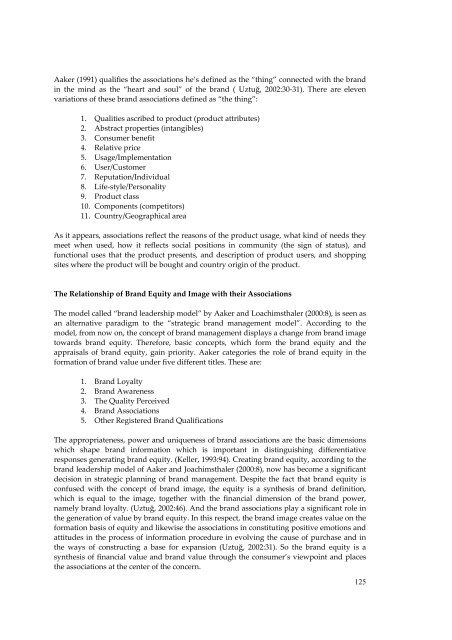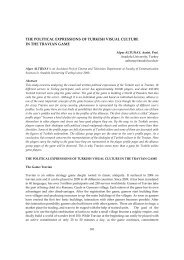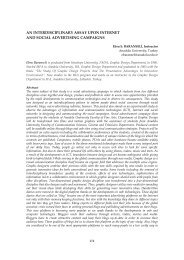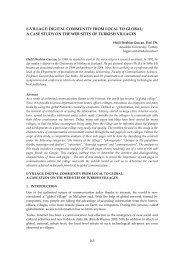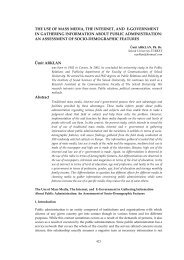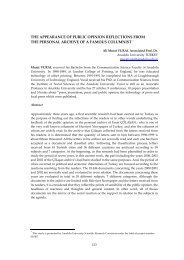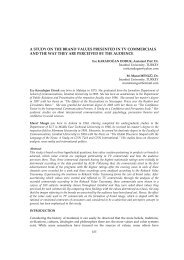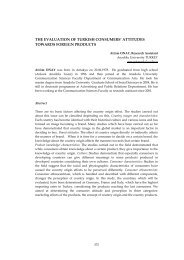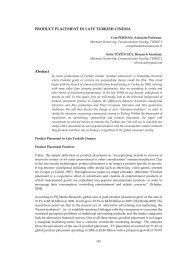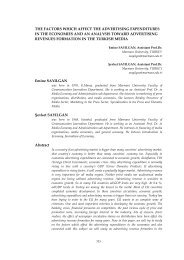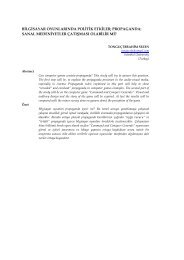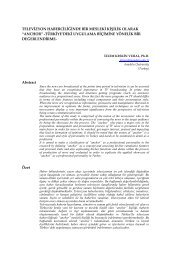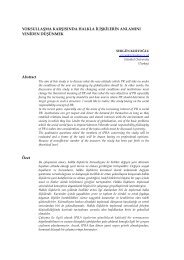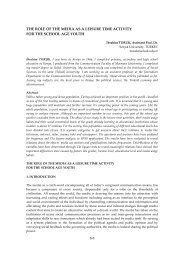THE ASSOCIATIONS OF JEAN BRANDS ON YOUNGSTERS: THE ...
THE ASSOCIATIONS OF JEAN BRANDS ON YOUNGSTERS: THE ...
THE ASSOCIATIONS OF JEAN BRANDS ON YOUNGSTERS: THE ...
You also want an ePaper? Increase the reach of your titles
YUMPU automatically turns print PDFs into web optimized ePapers that Google loves.
Aaker (1991) qualifies the associations he’s defined as the “thing” connected with the brand<br />
in the mind as the “heart and soul” of the brand ( Uztuğ, 2002:30-31). There are eleven<br />
variations of these brand associations defined as “the thing”:<br />
1. Qualities ascribed to product (product attributes)<br />
2. Abstract properties (intangibles)<br />
3. Consumer benefit<br />
4. Relative price<br />
5. Usage/Implementation<br />
6. User/Customer<br />
7. Reputation/Individual<br />
8. Life-style/Personality<br />
9. Product class<br />
10. Components (competitors)<br />
11. Country/Geographical area<br />
As it appears, associations reflect the reasons of the product usage, what kind of needs they<br />
meet when used, how it reflects social positions in community (the sign of status), and<br />
functional uses that the product presents, and description of product users, and shopping<br />
sites where the product will be bought and country origin of the product.<br />
The Relationship of Brand Equity and Image with their Associations<br />
The model called “brand leadership model” by Aaker and Loachimsthaler (2000:8), is seen as<br />
an alternative paradigm to the “strategic brand management model”. According to the<br />
model, from now on, the concept of brand management displays a change from brand image<br />
towards brand equity. Therefore, basic concepts, which form the brand equity and the<br />
appraisals of brand equity, gain priority. Aaker categories the role of brand equity in the<br />
formation of brand value under five different titles. These are:<br />
1. Brand Loyalty<br />
2. Brand Awareness<br />
3. The Quality Perceived<br />
4. Brand Associations<br />
5. Other Registered Brand Qualifications<br />
The appropriateness, power and uniqueness of brand associations are the basic dimensions<br />
which shape brand information which is important in distinguishing differentiative<br />
responses generating brand equity. (Keller, 1993:94). Creating brand equity, according to the<br />
brand leadership model of Aaker and Joachimsthaler (2000:8), now has become a significant<br />
decision in strategic planning of brand management. Despite the fact that brand equity is<br />
confused with the concept of brand image, the equity is a synthesis of brand definition,<br />
which is equal to the image, together with the financial dimension of the brand power,<br />
namely brand loyalty. (Uztuğ, 2002:46). And the brand associations play a significant role in<br />
the generation of value by brand equity. In this respect, the brand image creates value on the<br />
formation basis of equity and likewise the associations in constituting positive emotions and<br />
attitudes in the process of information procedure in evolving the cause of purchase and in<br />
the ways of constructing a base for expansion (Uztuğ, 2002:31). So the brand equity is a<br />
synthesis of financial value and brand value through the consumer’s viewpoint and places<br />
the associations at the center of the concern.<br />
125


